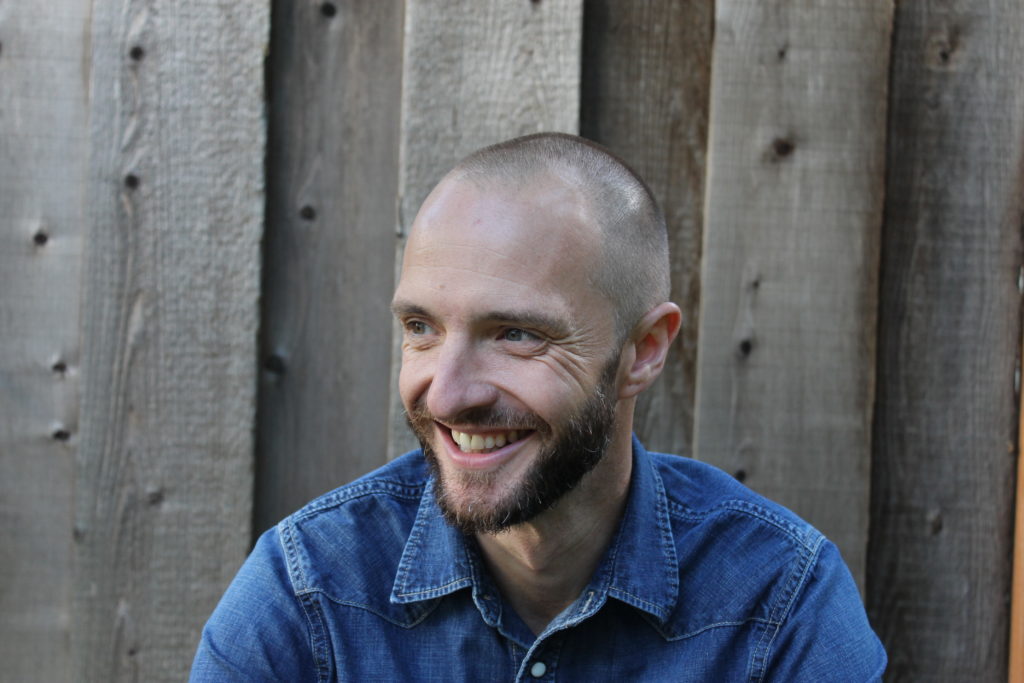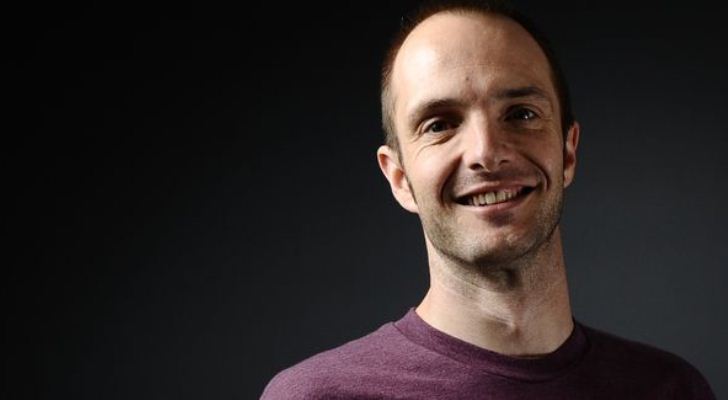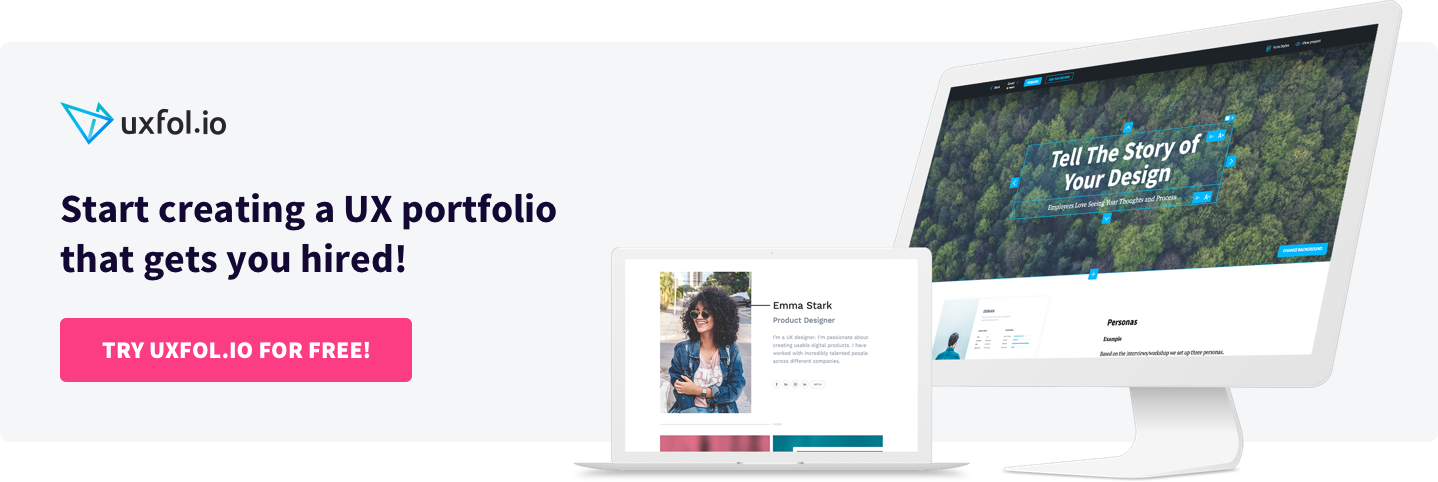One of the seasoned designers in Silicon Valley, Josh Brewer didn’t just lead design teams in well-known companies like Twitter, he also founded a company and started building a design tool to help his fellow colleagues. I talked with the Abstract founder and CEO about his exciting career path, how he selects designers for his team, and how to become a great designer.

Hi Josh! It is a great pleasure to have you on our blog. Can you introduce us to the tool you are building now, Abstract?
Sure. As a version control and workflow tool for design teams, Abstract provides one single place to manage, version, and collaborate on design files. Today you can use it with Sketch and we are actively working on supporting Adobe and other file formats as well. The long-term goal is to become the place where you manage, version, and collaborate on all the files related to your design work.
Before starting this company, you worked as Principal Designer at Twitter. What made you want to leave and start your own business?
I loved Twitter for many reasons. I have also given a couple of talks about our responsibility as designers of the products we are putting out in the world. I was seeing things that I was uncomfortable with, and I had a strong feeling that I alone couldn’t change them. Unfortunately, during the last few years, we have seen the result of many of those decisions and patterns. That was not the primary reason why I left, but rather a secondary reason.
The primary reason was that I had a vision about a thing I called the product studio. It resembles an incubator. I knew a lot of great designers and engineers, and a lot of them came to me and said they had an idea, but they didn’t know how to find the right co-founder or raise capital. And I just kept having these conversations. I believed in an opportunity to create a space for design and development to come together with a time-boxed way to explore and prototype these ideas early on to see if there is something worth pursuing.
So I started a company called Habitat, an incubator. With designers and developers, we were working on several different ideas at the same time. It was 2015, and we ended up spinning out two companies, and one of them is Abstract. It became clear to me that Abstract was the thing I was supposed to do. So I shut down Habitat and put all my energy into Abstract.
That’s a great story, and at least a bit similar to mine. I also started as a designer, then became a design agency CEO, and now we are building our own tool for designers, UXfolio, a UX portfolio platform.
As I see on your website, you are currently hiring designers. When someone applies for a designer position at Abstract with their portfolio, what are you looking for?
It depends on the role we are hiring for. Right now we have a product design role open for a generalist who has strong skills in designing products and tools. If you have experience in designing tools or enterprise products, that definitely will help. Our product is quite complex from a systems standpoint. We are looking for strong system thinkers. So designers who have a background in information architecture or a traditional UX skill set combined with some good, strong visual skills, make the ideal candidates.
“From a portfolio standpoint, we are really looking for someone who can communicate well, for one: someone who can give a clear narrative around their role in a specific project.”
If they have these UX designer skills, how can they showcase this in their portfolios?
From a portfolio standpoint, we are really looking for someone who can communicate well, for one: someone who can give a clear narrative around their role in a specific project. Who did you collaborate with? Did you work with other designers? Was there a product manager? Did you work with engineers? What other stakeholders did you have to manage and what did that look like?
Because at the end of the day, the design work makes up just one chunk of it. And all the interpersonal skills—the communication and the collaboration—actually make you successful.
You can be the most talented designer in the world, but if you’re an asshole and can’t work well with other people, it’s going to be a challenge.
Seeing your aesthetic sensibilities always provides value. It helps to understand how someone uses typography, color and spacing, how they pay attention to information hierarchy and interactions. The ability to actually see something in action also helps.
“You should highlight how your skill set helped the project succeed. Also, highlight the challenges.”
But at the end of the day, it really involves your role and how you interacted with all the other people you worked with. You should highlight how your skill set helped the project succeed. Also, highlight the challenges. If you can find ways to encapsulate those, you’re going to collect what the hiring manager needs to know in an awesome way. That will set you up for real success.
How should designers talk about the team setup they worked in?
One of the interesting things earlier in my career when I was hiring was interviewing someone, looking at their portfolio, and finding out that they didn’t actually design the thing they showed you. Or they just designed one tiny, little piece of it.
So very quickly I got in the habit of asking people, “What was your specific contribution? Did you design the whole entire thing by yourself? Did you do it with a team? Did it involve research? How did you interact with them? What approach did you take solving the problem?” And then asking about the interpersonal pieces. I think if you can combine those two things together, you give the hiring manager a lot to work with, and they will feel a lot more confident either to move forward or not.
“I try to focus on the process even more than the end result. […] The final output obviously has value and importance, but I’m more interested in how you got there.”
And in your opinion, how important is it to show the design process, the UX methods used, and the design decisions in a portfolio?
It’s critical. Personally, when I’m interviewing, I try to focus on the process even more than the end result. I really want to know your thought process. What steps did you take to validate your assumptions? Did you have data available you could look at or did you just go from your gut? I want to know how you think as a designer. The final output obviously has value and importance, but I’m more interested in how you got there.
“The only failure is a failure to learn from your mistakes.”
You also said you want to see the challenges a candidate faced. If I show you something I screwed up, what would you think of me?
I will say what I always say internally in Abstract: The only failure is a failure to learn from your mistakes. If you failed and you screwed up something really bad, and you learned from it, and you can tell me how you changed the way you work and how it helped you become really successful in the following projects, I would be really excited. Because you are being honest and sharing how you learn and grow.
I totally get the idea of not wanting to show weaknesses. And I know I might not represent everybody else out there, but in our company, we really value candor. We encourage people to be open and honest. Owning the moment when you screwed up and showing how you fixed it, or what you did differently because of it, that’s awesome. I think that’s valuable.
Can you give us any tips on how to showcase the design process in a product design portfolio?
Your timing is really interesting. A friend of mine, Dan Mall, just wrote an article called “A Portfolio Hiring Managers Can’t Deny”. I would recommend that article to every single designer trying to get a job. As a design manager, I can say anyone who would show up with a portfolio even remotely like that would have an outsized chance getting into the interview process.
We will publish an interview with Dan Mall as well in the coming weeks. Talking about Abstract, what selection process does your company use right now?
We are a small company and we are growing, so we are just putting a lot of these processes in place right now. When people apply, they go into our applicant tracking system. We review the folks in there to see if we want to take the next step with them. We try to be pretty quick with that. If we don’t want to move forward, we try to communicate it back as quickly as we can.
We usually start with a phone screen. If that goes well, we either do another phone call with another team member or invite the person to come in and show a little bit of work to some of our design team. And if that’s a thumbs-up, we do a full interview panel, and then either offer the job or not. That tends to be more or less the process we follow.
“One of the best things junior designers can do: Design something for yourself. A side project, a pet project, or even just as an exercise.”
What would you suggest to junior designers on how to get into the UX industry and start up their UX career?
One of the best things junior designers can do: Design something for yourself. A side project, a pet project, or even just as an exercise.
I can go back to the very early days of my career and times when I just sat down, found something I liked and tried to recreate it on my own. How in the world would I go from zero to this design? It was reverse engineering that designer’s thinking process, and understanding how they might have gotten to that conclusion.
You can also design something for yourself. Maybe you have a hobby you really care about. Design a website for that or an app for something you always wanted, even if it never gets built.
A lot of people like to reinvent the wheel just for fun. But as a designer, I think it becomes way more useful to ask yourself, “Why are the existing patterns designed as they are. And is there a way to improve upon that?”
It’s a great challenge to take an existing design pattern, understand what problem it is solving, and then look for ways you can potentially improve on it. And then honestly, share it. Write about your thinking.
“I know a lot of designers who tend to journal a lot about their process. […] I think you can share that. It gives people an idea of who you are, how you think about stuff.”
Write about how you ran down five different roads, and all of them wound up dead ends. And then suddenly you asked the question in a different way, and it unlocked it, and here is the result. I know a lot of designers who tend to journal a lot about their process. Just for themselves. I think you can share that. It gives people an idea of who you are, how you think about stuff. You will get feedback and critique, and maybe a more senior designer will jump in and you can build a relationship with them. And who knows what doors that will open.
I would also tell junior designers to find design communities and contribute there. Participating in meetups, or hosting a meetup or volunteering at events all make really great opportunities to get into the community, build relationships and look for mentors.
Wow, that reminds me of my high school years when I was doing websites for my parent’s little company. Thank you, Josh, for the interview and the great tips!

Are you wondering how to become a great designer? Take Josh’s advice, design something for yourself and practice as much as you can. In case you would like to present your design process and the result in your portfolio, UXfolio is a great platform for it.
We created our product, UXfolio to support UX professionals with portfolio building. It is quick and easy to build a portfolio that contains all the parts Josh talked about. It generates you your portfolio website, a stunning front page, and it helps you to put together nice project case studies in minutes. It also helps you in the copywriting part with great examples and guiding questions.
Start building your meaningful UX portfolio with UXfolio.
Click here to sign up and try it out!
